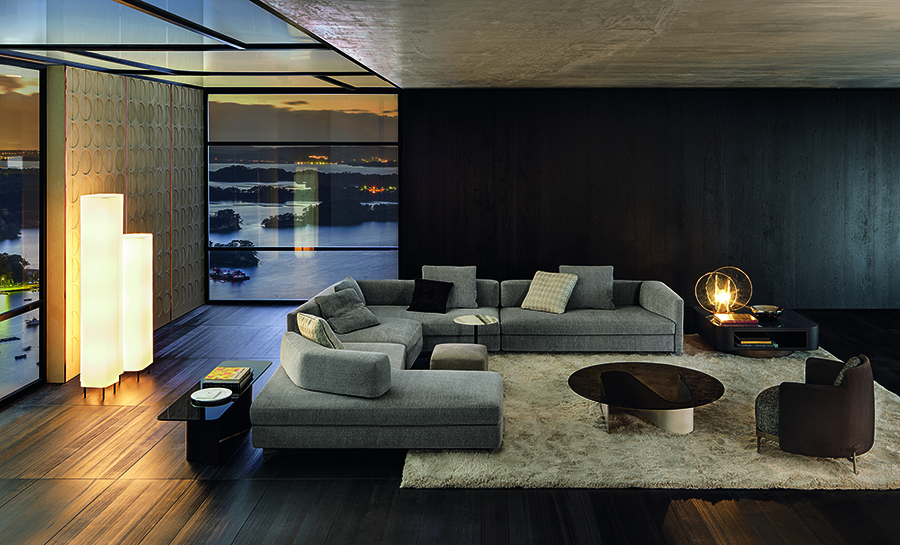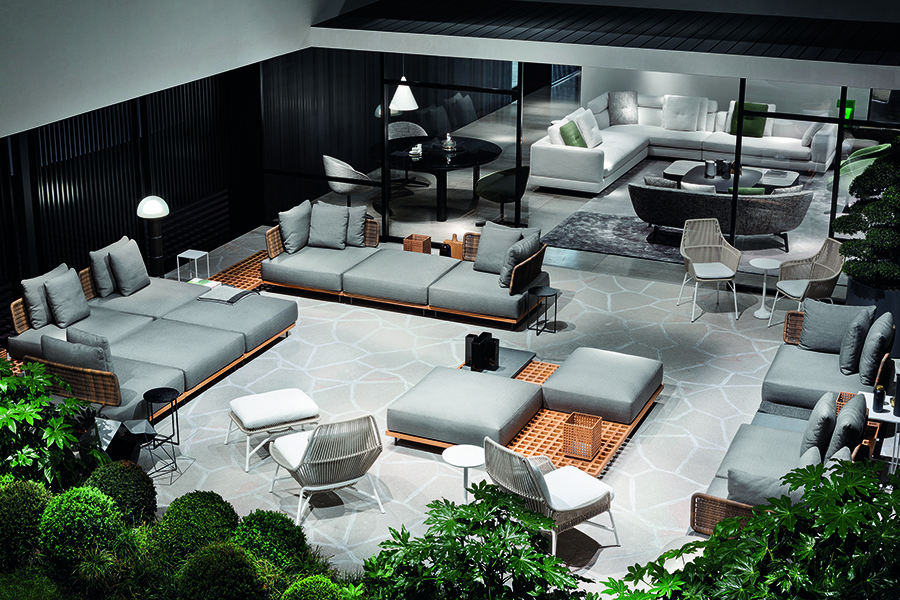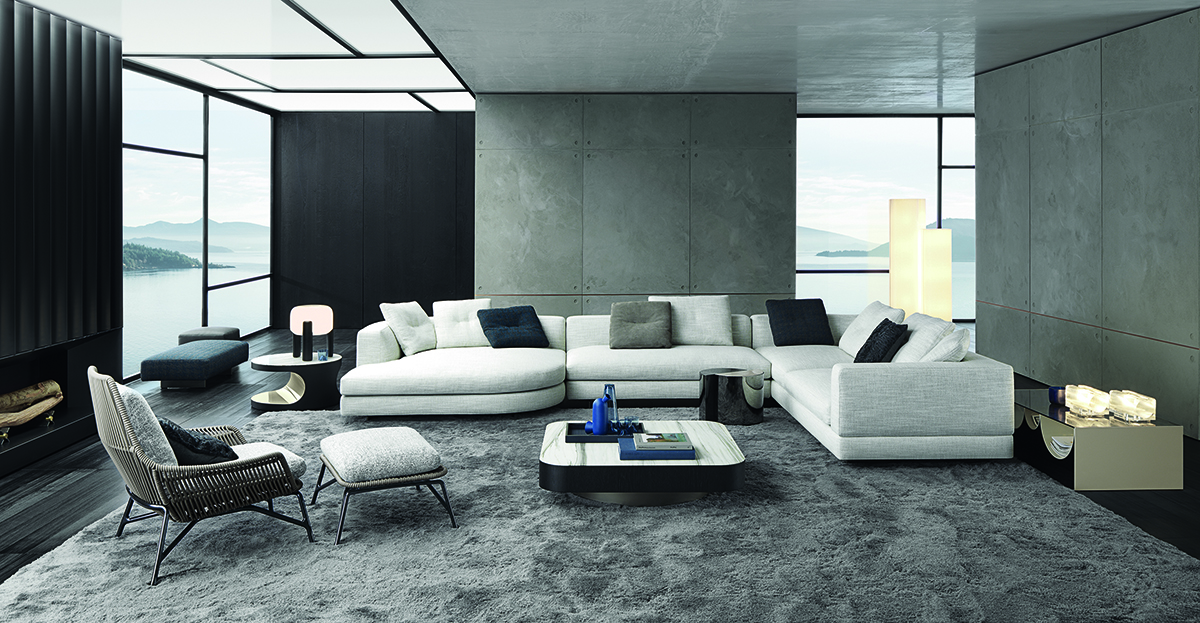
In terms of versatility and modularity, Minotti pieces, especially those that were introduced in the last five to 10 years, can easily be mixed and matched with new and even future designs without compromising form and function.
By Alex Y. Vergara
The advent of social media, particularly Instagram, has become both a bane and a boon for high-end furniture brands, says Ferdie Ong. As the general manager of Metro Manila-based Living Innovations, Ferdie has been responsible for bringing into the country more than a dozen top European furniture, appliance and home entertainment brands, including Italian-made and family-owned Minotti, for 16 years now.
On the occasion of the furniture brand’s 70th anniversary, Ferdie talks about Minotti’s merits, including its versatility, durability, timeless quality and rather expensive price tag, to PeopleAsia at its airy 350-sq. m. showroom in Bonifacio Global City, Taguig. Then and now, Minotti has been guided by its belief in the importance of collaborating with a seasoned architect in crafting some of its more important collections.
“In the 1960s, they employed architect Gigi Radici, the Rodolfo Dordoni of that time,” says Ferdie. “In a similar way, members of succeeding generations employed Dordoni in the late 1990s to provide the brand with architectural direction.”
Mixed and match
In terms of versatility, Minotti pieces, especially those that were introduced in the last five to 10 years, can easily be mixed and matched with new and even future designs without compromising form and function. When people buy Minotti, they’re not just buying pieces of furniture. What they’re, actually, buying into is the “Minotti look.”
Its clean cotemporary lines, says Ferdie, enables you to “combine pieces from previous collections and from different dates. This quality is absent or not as strong in other high-end brands, especially those that are too trendy.”
On a personal note, one of his all-time favorite Minotti pieces is the Hamilton sofa. In his book, Ferdie believes that the particular piece pushed the brand to the level that has made it more relatable to more people as well as more flexible to adapt to the modern home.
“The Hamilton sofa has been one of the most copied designs in the world,” he shares. “What better compliment can you ask for? You know your brand has made it when companies from China and even from Europe try to replicate the brand’s line or look.”
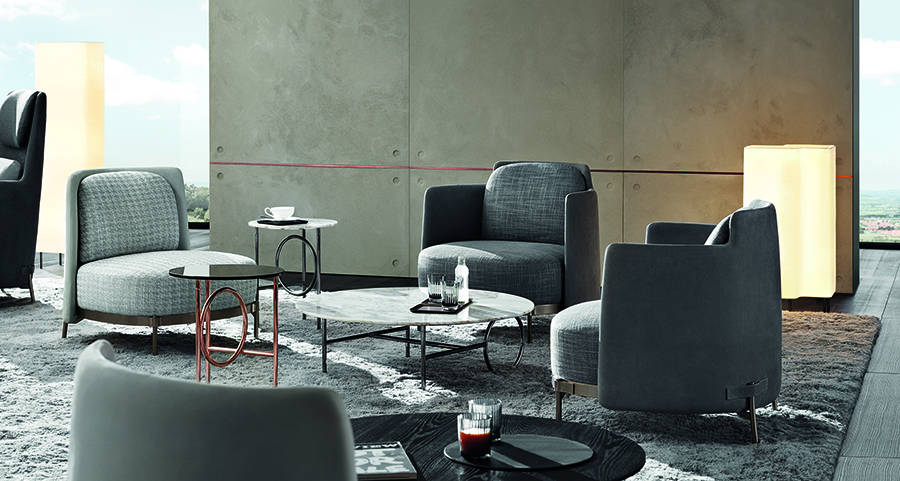
Exclusive Philippine distributor
Having been the brand’s exclusive distributor in the Philippines, Ferdie also speaks fondly of his close relationship with certain members of the Minotti family belonging to the second and third generations. Founder Alberto Minotti has since passed on in 1991, leaving behind the business to his sons Renato and Roberto.
In due time, members of the third generation, particularly twins Alessio and Alessandro as well as Susana, an architect, eventually joined the business.
As head of Minotti’s fabrics division, Alessandro personally chooses most of the fabrics to be used in the brand’s newer pieces. Meanwhile, Alessio is in charge of the production line and operations. As a trained architect, Susana is tasked to create the showroom’s setups and spaces.
In Ferdie’s Minotti showroom in BGC, for instance, customers could choose from more than 300 types of fabrics, colors and materials. What’s more, new fabrics can be used on old pieces. In the advent of condo living, you can also ask Ferdie’s team to customize the size as well as have dimensions altered to suit your spaces.
But perhaps the best part is, thanks to Minotti’s versatile nature, you can combine pieces released, say, as early as 2005 with a side table and armchair released in 2018 and 2014, respectively.
“But you have to wait for at least four months to get your order from Italy. I can’t readily sell most of the pieces in the showroom even if I want to. It would leave certain spaces bare, which is a no-no when it comes to managing a showroom,” he says with a chuckle.
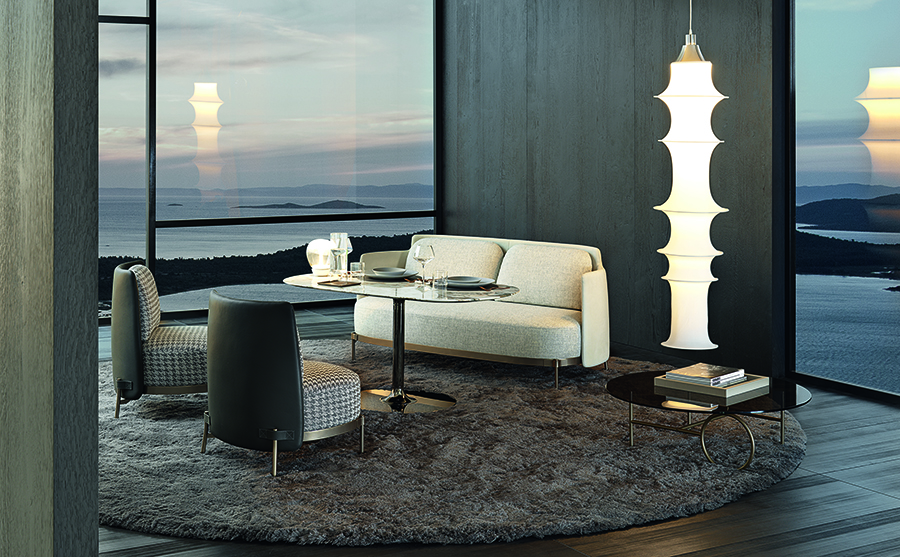
Start with a chair or sofa
For those new to Minotti, Ferdie advises them to start with a sofa or chair. Since you could seamlessly reconfigure or add to your initial purchase later on, it’s perfectly all right to build on a few key pieces first. Ferdie sums up this rather unique quality in one word: modularity.
“Imagine if you have the ability to modularize your pieces. If you move to a bigger home in the future, you can still use the first few pieces you bought. If you want a new look, you could simply change the cover,” he says.
Despite being mindful of the need to produce durable and practical pieces, design remains an integral part in the Minotti DNA. And after having known them for years, Ferdie is amazed at how the family continues to spring surprises on both their partners and loyal customers the world over.
For instance, in 2016, the family created the biggest booth in Milan, prompting Ferdie to ask them then in jest, “Are you sure you can do better?” Of course, they could! In 2018, they created a global collection that tapped the genius of three designers who, says Ferdie, “harmoniously worked together” in order to mirror the current Minotti lifestyle.
Buying habits
After nearly two decades dealing with all sorts of clients, Ferdie says that their target market’s buying habits have gradually changed. “Now, because of social media,” he continues, “a growing number of people want to own a Minotti much earlier, even before they can even afford one. Before, they only bought when they had the means.”
This right here, right now attitude among younger consumers has given rise to a rather twisted preference for fake stuff that look good in pictures, but are wanting in terms of workmanship, quality, durability and certainly heritage. Unlike before when not a few people really go the extra mile to invite friends to their homes and tour them around, a growing number of older millennials are simply content to brag about their latest acquisitions through pictures.
Social media, Ferdie adds, doesn’t tell you the entire picture. Apart from presenting incomplete images, it creates “confusion.” On the plus side, Minotti, like most other brands, has now become more well-known. Thanks to this free publicity, it’s aspirational quality is not lost on people who want to level up should the time come when they could afford to buy the brand.
“Those who buy fake Minotti pieces are never our clients anyway,” Ferdie says matter-of-factly. “The beauty of educating the public is, first, they become aware of the brands we carry like Minotti and how superior these brands are compared to copycat products.”

Privileged
Ferdie and his team also feel privileged to be in a position to help enlighten and influence people’s taste as well as provide them with options. By informing them what the brand stands for, Ferdie is more or less able to gauge if a prospective client “would go with our taste and our look.”
As for the stingy ones who buy, to put it mildly, imitations in lieu of the originals in their desire to “save” or show off, they often live long enough to regret their decision. In some cases, not a few of them would come to Ferdie and tell him that the counterfeit furniture pieces they bought have started to fall apart in less than a year.
“Unfortunately, when they learn this, it’s too late,” says Ferdie. “Still, there are people who insist on buying fakes instead of originals. Well, it’s their choice. As long we’ve done our job in educating them, that’s fine.”
